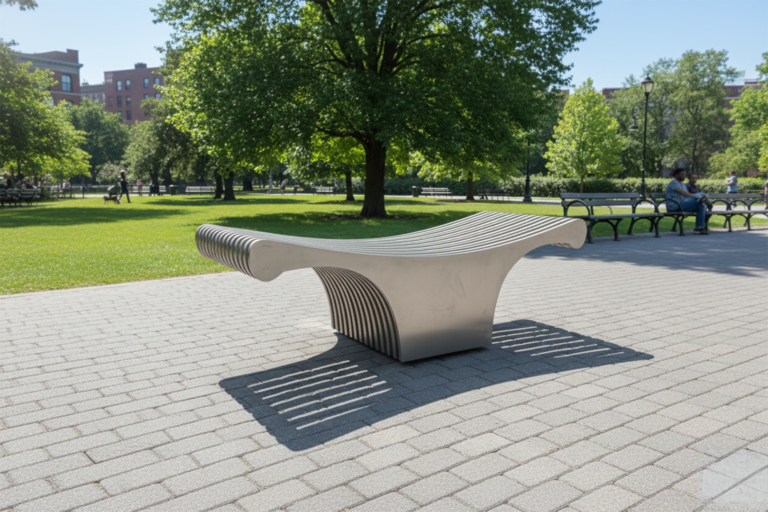Table of Contents
Algorithmic modeling is a powerful computational design methodology that allows designers to create complex geometries and shapes using mathematical algorithms. With the growing demand for optimization and customization across industries, algorithmic modeling has become an essential tool for architects, engineers, product designers, and digital artists.
This article provides an academic overview of algorithmic modeling, including its concepts, historical overview, benefits, and applications.
Algorithmic Modeling Concepts
Algorithmic modeling is based on the use of mathematical algorithms to create complex geometries and shapes. The process includes defining a set of parameters that are used to create a design. These parameters can be adjusted and optimized to create different design variations. Algorithmic models are created using parametric modeling software. The software allows designers to create and modify algorithmic models in a visual programming environment.
Historical overview of algorithmic modeling
The roots of algorithmic modeling can be traced back to the fields of computer science and mathematics. The use of algorithms in design was first introduced in the late 1960s and early 1970s with the development of computer-aided design (CAD) software.
However, it was not until the late 1990s and early 2000s that algorithmic modeling became more accessible to architects and designers. The implementation of parametric modeling software has become widespread in architecture and design.
Benefits of Algorithmic Modeling

Benefits of Algorithmic Modeling explained by BeeGraphy Blog. Image: Shutterstock
Algorithmic modeling offers several advantages over traditional design methods, including:
Flexibility: Algorithmic models can be customized and optimized according to specific project parameters, making it easy to change and adapt projects.
Efficiency: Algorithmic modeling enables faster and more efficient design iterations, reducing the time required for manual adjustments and iterations.
Complexity: Algorithmic modeling allows designers to create complex shapes and figures that would be difficult or impossible to create by hand.
Accuracy. Algorithmic models provide a high degree of precision and accuracy, which is very important in industries such as engineering and manufacturing.
Applications of algorithmic modeling

Applications of algorithmic modeling. Image: Shutterstock
Algorithmic modeling is used in various industries, including:
Architecture. Architects use algorithmic modeling to create complex building designs and explore different design options.
The use of algorithms can help architects to quickly explore multiple design options and optimize various parameters such as form, material efficiency, structural stability, and environmental performance. This approach has become increasingly popular in architecture, especially with the advancement of computer technology and software development.
Algorithmic modeling offers architects greater flexibility, precision, and efficiency in their design process, enabling them to create innovative and sustainable solutions for contemporary architectural challenges.
Engineering: Engineers use algorithmic modeling to optimize product performance and improve manufacturing efficiency.
Algorithmic modeling in engineering is a process of using computer algorithms to create and optimize engineering designs. It involves the use of mathematical formulas and computer software to design, simulate, and analyze complex systems, structures, and processes.
Algorithmic modeling is used in many engineering fields such as mechanical, civil, and electrical engineering to create models that can predict the behavior and performance of a product or system. It enables engineers to quickly test and refine designs before they are built, reducing the time and cost of the design process.
Additionally, algorithmic modeling can be used to optimize various factors such as strength, weight, and durability, leading to more efficient and effective designs. As computer technology continues to advance, algorithmic modeling is becoming an increasingly important tool in the field of engineering, enabling engineers to design and innovate at a faster pace than ever before.
Product Design: Algorithmic modeling is used in product design to create complex shapes and optimize product performance.
Algorithmic modeling has revolutionized the field of product design by allowing designers to create complex shapes and structures that would be difficult or impossible to achieve using traditional design methods.
With algorithmic modeling, designers can use computer algorithms to generate and refine designs quickly, allowing them to explore a wide range of design options and test different variations.
Additionally, algorithmic modeling can help designers to optimize various factors such as strength, weight, and functionality, resulting in more efficient and effective products. It is particularly useful in the design of consumer products such as smartphones, wearables, and appliances, as well as in industrial design for manufacturing equipment and machinery.
The use of algorithmic modeling has become an essential tool for product designers, enabling them to create innovative and sustainable products that meet the evolving needs of consumers and society.
Digital art and animation. Algorithmic modeling is used in digital art and animation to create complex visual effects and realistic 3D models.
With algorithmic modeling, artists and animators can use mathematical algorithms to generate and manipulate shapes, patterns, and textures, allowing them to create intricate and abstract designs that are both beautiful and technically advanced.
Additionally, algorithmic modeling can help artists and animators to create more efficient and realistic animations by automating certain aspects of the animation process.
This approach has become increasingly popular in fields such as video game design, motion graphics, and visual effects, where high levels of detail and complexity are required. The use of algorithmic modeling has opened up new creative possibilities for artists and animators, enabling them to push the boundaries of what is possible in the digital realm.
Conclusion
Algorithmic modeling is a powerful design methodology that allows designers to create complex geometries and shapes using mathematical algorithms. With numerous benefits including flexibility, efficiency, complexity, and accuracy, algorithmic modeling has become an essential tool for architects, engineers, product designers, and digital artists.
A historical overview of algorithmic modeling highlights the evolution of this technology, from its roots in computer science and mathematics to its widespread application in various industries. The application of algorithmic modeling to architecture, mechanical engineering, product design, and digital art demonstrates its versatility and potential for innovation.










